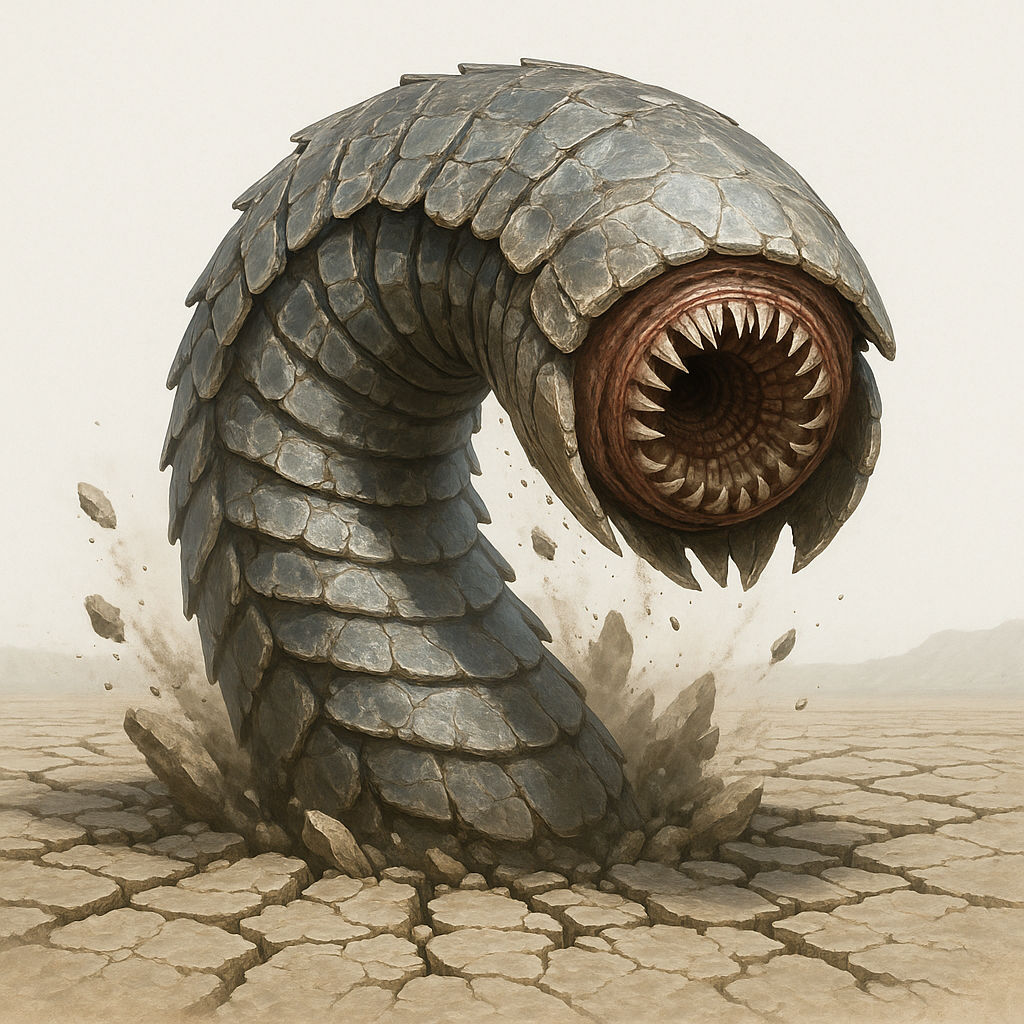Shale-Splitter
Shale-Splitter
Biological Profile
Scientific Name
Lithovorax erupti
ClassificationSubterranean Ambush Annelid
KingdomAnimalia
PhylumAnnelida
ClassClitellata (specialized subclass: Tremorvorida)
OrderEruptiformes
FamilyLithovoracidae
HabitatSalt flats, seismic gouges, collapsed basins, dried hydrofields
RangeArid tectonic lowlands and crust-fracture zones of Thauzuno
Physical Characteristics
Length
3.9–4.3 m
Diameter1.0–1.2 m
Weight1.7–1.9 metric tons
Armor CompositionCalcite-glass dermal plating with layered fracture resistance
ColorationPale gray to off-white or iron-brown with vitreous scale reflectivity
Distinctive FeaturesRotating jaw core; limbless, spiked ventrum; vibration-tracking dermal nodes
Physiology & Systems
Respiration
Anaerobic/metabolic hybrid; high lactic acid tolerance
LocomotionHydraulic muscle bursts; burrow-drift via peristaltic wave motion
Sensory SystemsSubdermal vibration lattice; zero optical or EM capability
Digestive SystemMulti-stage acidic breakdown with internal neutralization chamber
Environmental RangeOperates efficiently between 4°C and 77°C in sedimentary substrates
Behavior & Lifecycle
Reproductive Mode
Oviparous, burrow-based nesting; hatchlings cannibalistic
Behavioral TraitsMotion-triggered attack reflex; post-kill torpor phases
Nesting BehaviorDeep-layer cavity formation with substrate filtration cap
Surface Emergence FrequencyIrregular; increases during storm-induced seismic flux
Lifespan22–30 years
Ecological Role
Trophic Level
Apex subterranean predator
DietLive prey, decaying organics, synthetic bioarmor residue
Surface ImpactHigh; destabilizes soil layers and infrastructure footings
Known InteractionsDestroys mobile equipment, survey convoys, and light-armored personnel transports
Hazard Designation Marked as a Category-IV Bio-Tectonic Threat. Avoid entry into marked splitter fields.



Comments